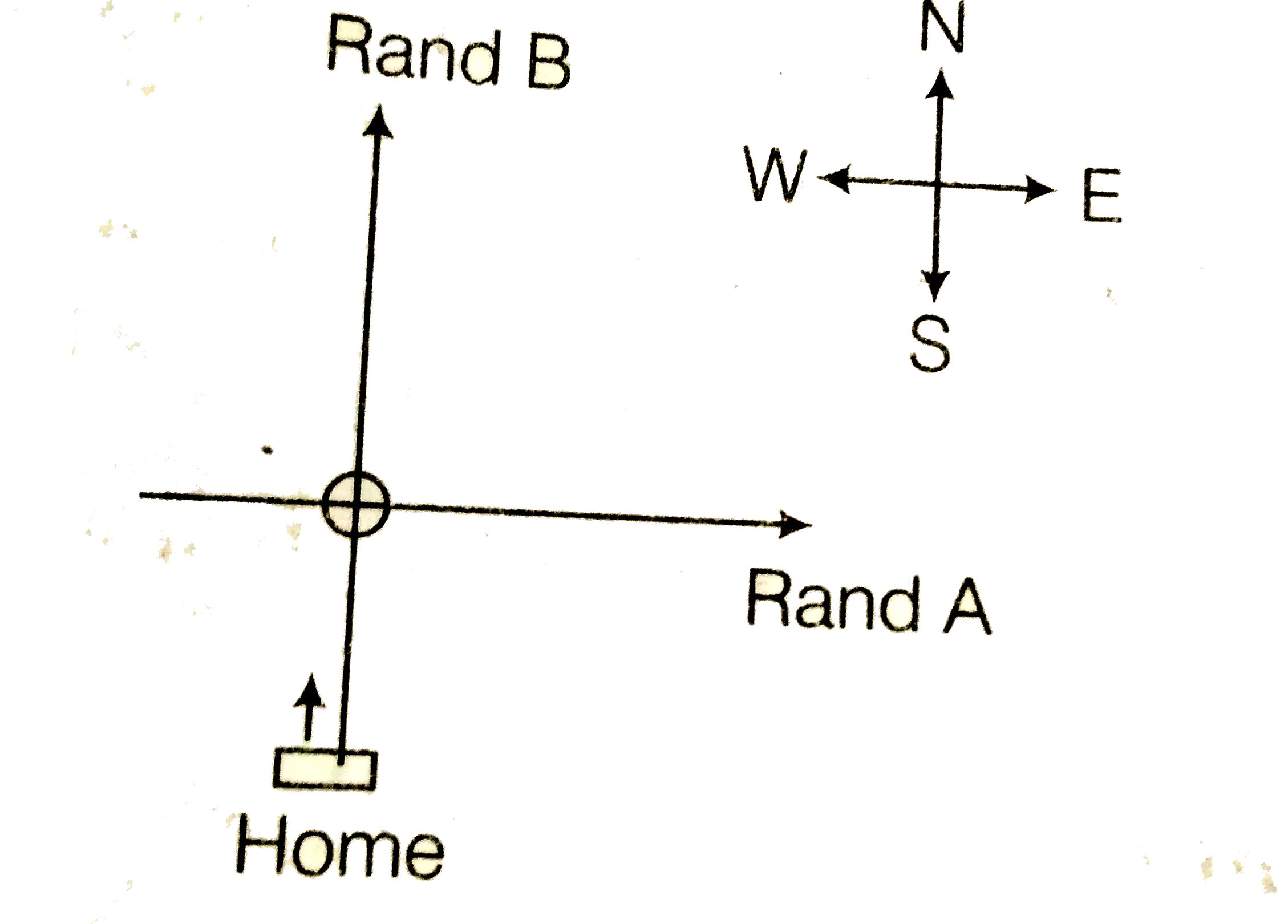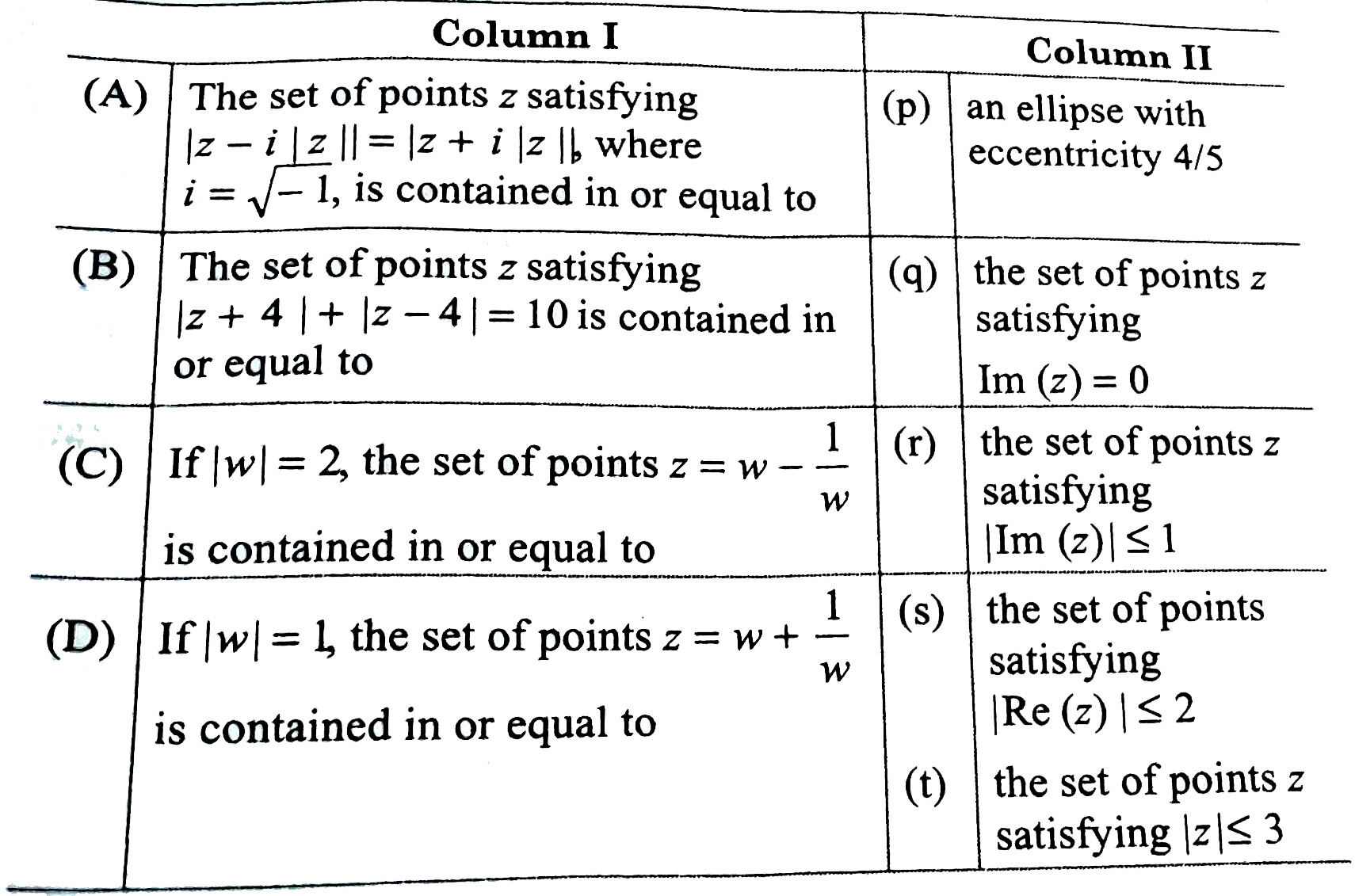Which of the following function(s) has/have the same range ?
A. f(x)=11+x
B. f(x)=11+x2
C. f(x)=11+√x
D. f(x)=1√3−x
The correct Answer is:B, C
To determine which of the given functions have the same range, we will analyze each function step by step.
Given Functions:
1. f(x)=11+x
2. f(x)=11+x2
3. f(x)=11+√x
4. f(x)=1√3−x
Step 1: Analyze the first function f(x)=11+x
Let y=11+x.
Rearranging gives:
1+x=1y⟹x=1y−1
For this function to be defined, y cannot be zero, hence:
y≠0
As x approaches −1, y approaches 1 (from the left). As x approaches ∞, y approaches 0 (from the right). Therefore, the range is:
y∈(0,1)
Step 2: Analyze the second function f(x)=11+x2
Let y=11+x2.
Rearranging gives:
1+x2=1y⟹x2=1y−1
For this function to be defined, y must be positive and 1y−1≥0 which implies:
y<1andy>0
Thus, the range is:
y∈(0,1)
Step 3: Analyze the third function f(x)=11+√x
Let y=11+√x.
Rearranging gives:
1+√x=1y⟹√x=1y−1
For this function to be defined, y must be positive and 1y−1≥0 which gives:
y<1andy>0
Thus, the range is:
y∈(0,1)
Step 4: Analyze the fourth function f(x)=1√3−x
Let y=1√3−x.
Rearranging gives:
√3−x=1y⟹3−x=1y2⟹x=3−1y2
For this function to be defined, 3−x>0 implies x<3. Thus, y must be positive, and √3−x cannot be zero:
y>0
As x approaches 3, y approaches ∞. Therefore, the range is:
y∈(0,∞)
Conclusion:
- The ranges for the functions are:
- f(x)=11+x: (0,1)
- f(x)=11+x2: (0,1)
- f(x)=11+√x: (0,1)
- f(x)=1√3−x: (0,∞)
The functions that have the same range are:
- B and C: f(x)=11+x2 and f(x)=11+√x.
1. f(x)=11+x
2. f(x)=11+x2
3. f(x)=11+√x
4. f(x)=1√3−x
1+x=1y⟹x=1y−1
For this function to be defined, y cannot be zero, hence:
y≠0
As x approaches −1, y approaches 1 (from the left). As x approaches ∞, y approaches 0 (from the right). Therefore, the range is:
y∈(0,1)
1+x2=1y⟹x2=1y−1
For this function to be defined, y must be positive and 1y−1≥0 which implies:
y<1andy>0
Thus, the range is:
y∈(0,1)
1+√x=1y⟹√x=1y−1
For this function to be defined, y must be positive and 1y−1≥0 which gives:
y<1andy>0
Thus, the range is:
y∈(0,1)
√3−x=1y⟹3−x=1y2⟹x=3−1y2
For this function to be defined, 3−x>0 implies x<3. Thus, y must be positive, and √3−x cannot be zero:
y>0
As x approaches 3, y approaches ∞. Therefore, the range is:
y∈(0,∞)
- The ranges for the functions are:
- f(x)=11+x: (0,1)
- f(x)=11+x2: (0,1)
- f(x)=11+√x: (0,1)
- f(x)=1√3−x: (0,∞)
- B and C: f(x)=11+x2 and f(x)=11+√x.
Topper's Solved these Questions
- CONTINUITY AND DIFFERENTIABILITYBook:ARIHANT MATHS ENGLISHChapter:CONTINUITY AND DIFFERENTIABILITYExercise:Exercise (Statement I And Ii Type Questions)
Explore 11 Videos
- CONTINUITY AND DIFFERENTIABILITYBook:ARIHANT MATHS ENGLISHChapter:CONTINUITY AND DIFFERENTIABILITYExercise:EXERCISE 4
Explore 3 Videos
- CONTINUITY AND DIFFERENTIABILITYBook:ARIHANT MATHS ENGLISHChapter:CONTINUITY AND DIFFERENTIABILITYExercise:Exercise (Single Option Correct Type Questions)
Explore 48 Videos
- COMPLEX NUMBERSBook:ARIHANT MATHS ENGLISHChapter:COMPLEX NUMBERSExercise:Complex Number Exercise 8
Explore 2 Videos
- COORDINATE SYSTEM AND COORDINATES Book:ARIHANT MATHS ENGLISHChapter:COORDINATE SYSTEM AND COORDINATES Exercise:Exercise (Questions Asked In Previous 13 Years Exam)
Explore 7 Videos
Similar Questions
Statement I f(x)=sinx+[x] is discontinuous at x = 0.
Statement II If g(x) is continuous and f(x) is discontinuous, then g(x) + f(x) will necessarily be discontinuous at x = a.
View SolutionA man leaves his home early in the morning to have a walk. He arrives at a junction of roads A and B as shown in figure. He takes the following steps in later journies :

(i) 1 km in North direction.
(ii) Changes direction and moves in North-East direction for 2√2 km.
(iii) Changes direction and moves Southwards for distance of 2 km.
(iv) Finally he changes the direction and moves in South-East direction to reach road A again.
Visible/invisible path The path traced by the man in the direction parallel to road A and road B is called invisible path, the remaining path is called visible.
Visible points The point about which the man changes direction are called visible points, except the point from where he changes direction last time.
Now if roads A and B are taken as X-asix and Y-axis, then visible point representing the graph of y = f(x).
If f(x) is periodic with period 3, then f(19) is
View SolutionIf f(x)={sinπx2,x<1[x],x≥1, where [x] denotes the greatest integer function, then
View SolutionMatch the statements in Column I with those in Column II.

View SolutionIf a vertex of a triangle is (1, 1) and the mid-points of two side through this vertex are (-1, 2) and (3, 2), then centroid of the triangle is
View SolutionWhich of the following functions have the same domain and range
View SolutionWhich of the following function (s) have their range a singleton for the permissible domain?
View SolutionWhich of the following pair of functions have the same graph ?
View SolutionWhich of the following functions have the same period ?
View SolutionWhich of the following function(s) has/have the same range ?
View SolutionWhich of following functions have the same graph?
View SolutionWhich of the following functions have their range equal to R(the set of real numbers)?
View SolutionWhich of the following functions (s) has/have the range equals [-1, 1]?
View SolutionWhich of the following functions has a range of −1<y<1 ?
View SolutionWhich of the following function x has range R :
View Solution
